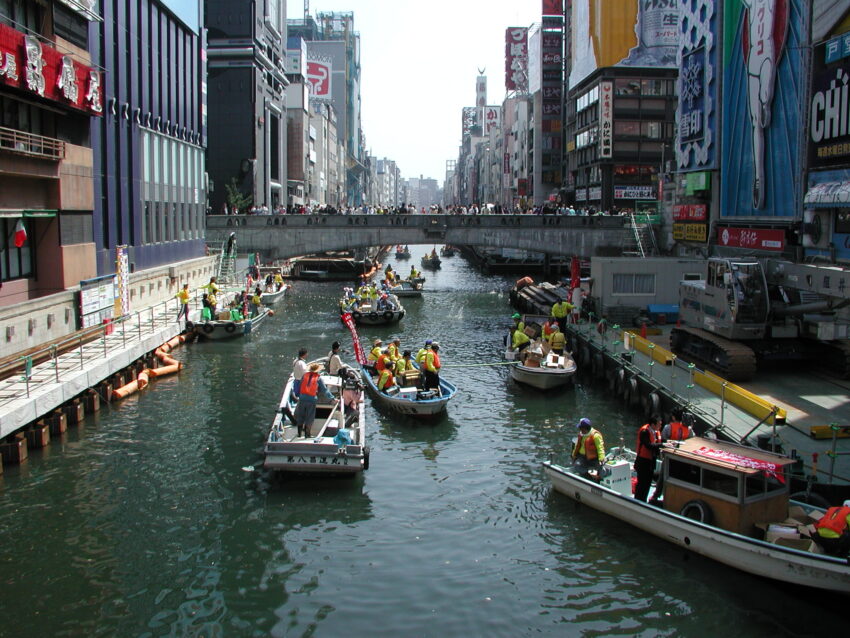How Bokashi Balls Saved Restaurants in Downtown Osaka
Osaka, the third-largest city in Japan, is located on the island of Honshu in the Kansai region. It is a dynamic economic and cultural hub, featuring modern architecture and a rich history.
The Dōtonbori River (Dōtonbori-gawa) is a canal that flows through the central part of Osaka, particularly the Dōtonbori district. This area is one of the city’s most iconic locations, famous for its vibrant nightlife, neon billboards, numerous restaurants, and shops. At the turn of the millennium, restaurants along the canal had to turn their backs on the water due to the terrible odor emanating from the polluted river. Today, these restaurants and shops have been redesigned to face the waterfront, transforming the river into a scenic, park-like space and a new tourist attraction in Osaka.
How Did It Happen?
The cleanup of the Dōtonbori River using EM Genki Balls (also known as EM Mudballs) was initiated by the Osaka Fisheries Cooperative twenty years ago, in 2003, and was a great success. Later, these efforts were taken over by the SPC Group, and today, the Dōtonbori River is clean, with large schools of carp thriving in its waters.
SPC Group is an interesting organizational structure, most closely resembling a foundation but differing in its management model. It is a network of collaborating government and non-governmental organizations, as well as private companies. The primary goal of SPC Group is to improve environmental quality, particularly through water purification, while also supporting sustainable development. Thanks to the group’s long-term efforts, Osaka’s symbolic Dōtonbori River—once known for its foul smell—is now a pleasant tourist spot for strolling.
The E. coli bacteria levels in the river are now below 1,000/ml, making the water safe for swimming. Due to this project’s success, EM technology has been systematically applied to most of Osaka’s major rivers, including the Yodo, Neyagawa, and Yamato rivers. As a result, these rivers have been cleaned, and fish populations, as well as freshwater clams (Shijimi), have significantly rebounded, making them a new culinary specialty of Osaka.
How Making Bokashi Balls Became a Tourist Attraction
From Osaka to the World: Genki Balls Unleashing the Potential of EM Technology
The partners involved in the Dōtonbori River cleanup project include The Ritz-Carlton hotel and the HIS travel agency.
In February 2024, HIS travel agency received the JATA SDGs Awards Incentive Prize in the tourism sector for its highly acclaimed “Bokashi Ball (Genki Ball) Making Experience” tour. In July, during the JATA SDGs Awards ceremony, HIS won the most awards among travel agencies, including another incentive prize for its EM Mudball Tour. These initiatives were recognized for strengthening community bonds, becoming part of an international movement, and evolving into a new form of ecological education.
What Is the JATA SDGs Award?
JATA, the Japan Association of Travel Agents, is a corporate association dedicated to increasing travel demand and promoting the healthy development of the tourism industry. Since 2023, JATA has been organizing the JATA SDGs Awards, which aim to promote the implementation of the Sustainable Development Goals (SDGs) in the tourism sector. The awards are given in four categories: Society & Human Rights, Economy & Industry, Global Environment, and Co-Creation. Each category includes an Excellence Award, a Special Award, and an Incentive Award.
Based on the blog post Living a Dream by Professor Teruo Higa on the EMRO website.
Below is a segment from the report on the Osaka Bay cleanup project, carried out by Osaka Fisheries Cooperative
Japan-Fighting-to-bring-back-the-shijimi-clams-to-thier-natural-habitat-1
